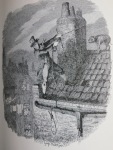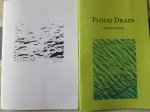
The forthcoming launch of Paul Rossiter’s 2015 programme of books from Isobar Press, details of which can be found at the foot of this blog, has prompted me to recall an Isobar production from last year: the meditative, witty and long-lasting short poems by Andrew Fitzsimons gathered from a reading of Kenkō.
‘Travel. Wherever you go
the world you bring with you
is washed by the world you see.’
There is a refreshing sense of whole attention in these poems and a quietness of reflection that glimmers long after the little book is closed. There is a merging of closely observed detail with a background that offers years of support:
‘What is bad taste?
too many knick-knacks about the place
too many brushes in the ink box
too many Buddhas
too many shrubs and plants in a garden
too many rooms in a house
too many words on meeting someone
a ledger all plus and no minus?
Myths, tales, stories tell us something about who we are and the American poet, Robert Duncan’s autobiographical essay, The Truth & Life of Myth (House of Books Ltd. New York, 1968), referred to a sense of ‘universal humanity’ which is open to being discovered in the ‘mixing-ground of man’s commonality in myth’:
The meaning and intent of what it is to be a man and, among men, to be a poet, I owe to the workings of myth in my spirit, both the increment of associations gathered in my continuing study of mythological lore and my own apprehension of what my life is at work there. The earliest stories heard, nursery rimes and animal tales from childhood, remain today alive in my apprehensions, for there is a ground of man’s imaginations of what he is in which my own nature as a man is planted and grows.
Duncan’s book was subtitled ‘An essay in Essential Autobiography’ and the poet recalled sitting with his sister, ‘my mother between us’, looking at pictures in a book ‘as my mother reads aloud’:
‘The picture I am looking at is of three young men sleeping on a mat. One of them, the poet Basho, has awakened. Their naked feet are uncovered where they have pulled the blankets up around their necks in the cold. There is a poem that goes with that picture on the page. But this is not the poem that comes to mind even as I see the picture. For as I remember that moment, there is another scene superimposed, a double exposure, in which the very plash of a frog jumping into an old pond appears as if from actual life itself, but this vivid impression belongs to one of the most famous of all Japanese hokkus’
In the poem ‘WORLDS’ by Fitzsimons the old world is washed by the new as if the lenses of the eye were being cleansed by focussed attention upon the new moment. When J.H. Prynne, at that time Director of Studies at Gonville and Caius, put together some ‘Tips on Practical Criticism for Students of English, 2006’ he associated close and broad reading skills in a way not dissimilar to this image of one world washed by another:
‘In fact, and in practice, however, close and broad reading skills reciprocally energise and complement each other. Regular exercises in close reading both sharpen and deepen accurate response to local texture and also feed into enhanced perception of larger-scale structure, to make us all-round better readers. One hand washes the other. Principles and foundations of a distinctive personal judgement begin to appear, together with increased range of response and cogency of evaluative judgement, supported by explorative argument within awareness of differing views and opinions. Step by step, as a reader, you begin to tune in and wake up.’
Read What the Sky Arranges and dwell for a moment upon ‘DATES:
‘Don’t wait till dotage for your goodness to begin.
Look at the dates on those gravestones.’
Isobar books are published to a very high standard and it would be worth going to this launch just to buy a copy of Andrew Fitzsimons’ poems let alone the new publications which include Peter Robinson’s poems from his time in Japan.
The London launch of Isobar Books takes place this Friday, 3rd July upstairs in the Rugby Tavern, Gt. James St. WC1N 3ES at 7.00.
Ian Brinton 29th June 2015









